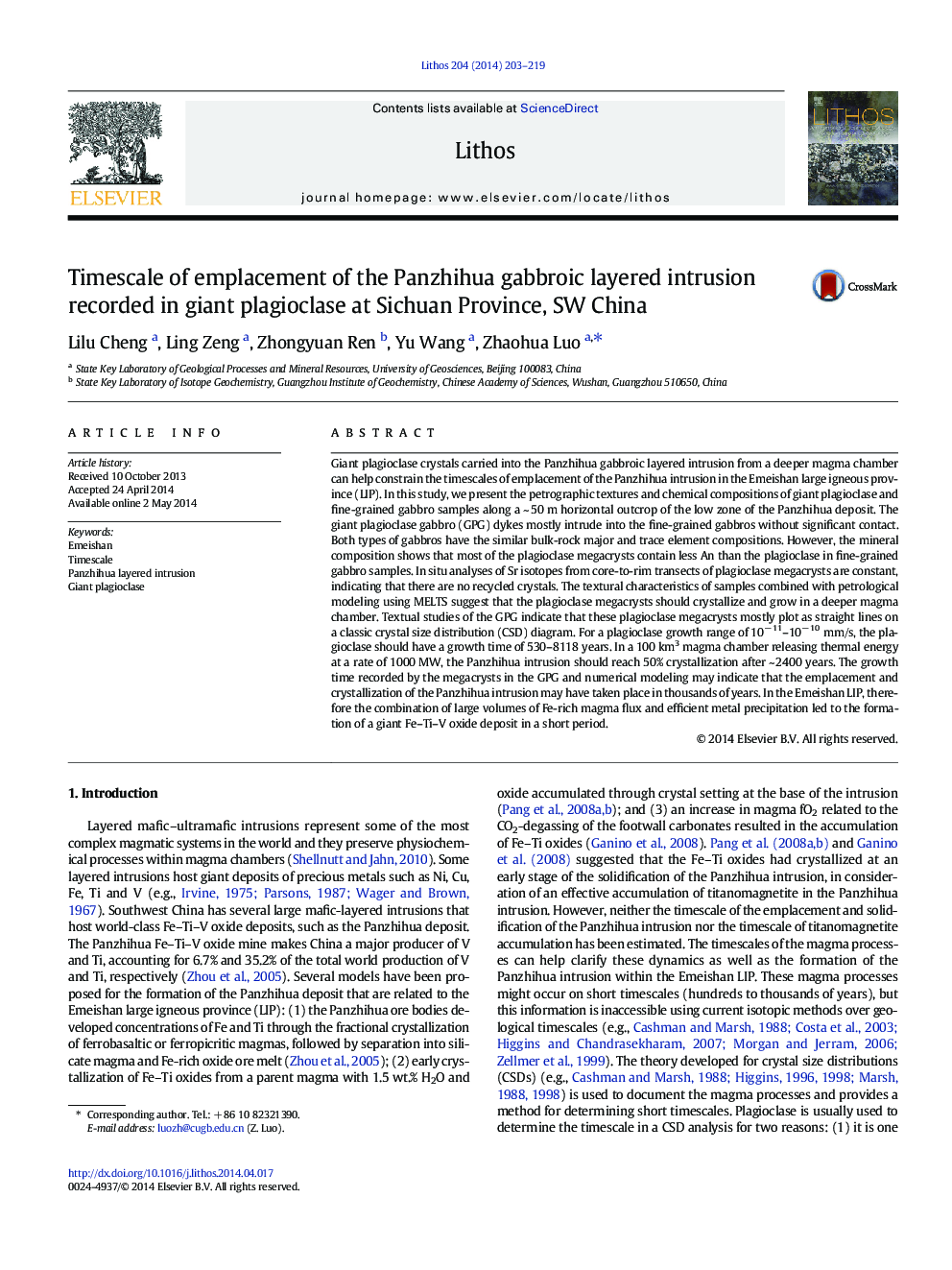| کد مقاله | کد نشریه | سال انتشار | مقاله انگلیسی | نسخه تمام متن |
|---|---|---|---|---|
| 4715861 | 1638674 | 2014 | 17 صفحه PDF | دانلود رایگان |
• Giant plagioclase gabbros were examined.
• Origin of giant plagioclase gabbros was determined.
• The timescale of emplacement of the Panzhihua intrusion was estimated.
Giant plagioclase crystals carried into the Panzhihua gabbroic layered intrusion from a deeper magma chamber can help constrain the timescales of emplacement of the Panzhihua intrusion in the Emeishan large igneous province (LIP). In this study, we present the petrographic textures and chemical compositions of giant plagioclase and fine-grained gabbro samples along a ~ 50 m horizontal outcrop of the low zone of the Panzhihua deposit. The giant plagioclase gabbro (GPG) dykes mostly intrude into the fine-grained gabbros without significant contact. Both types of gabbros have the similar bulk-rock major and trace element compositions. However, the mineral composition shows that most of the plagioclase megacrysts contain less An than the plagioclase in fine-grained gabbro samples. In situ analyses of Sr isotopes from core-to-rim transects of plagioclase megacrysts are constant, indicating that there are no recycled crystals. The textural characteristics of samples combined with petrological modeling using MELTS suggest that the plagioclase megacrysts should crystallize and grow in a deeper magma chamber. Textual studies of the GPG indicate that these plagioclase megacrysts mostly plot as straight lines on a classic crystal size distribution (CSD) diagram. For a plagioclase growth range of 10− 11–10− 10 mm/s, the plagioclase should have a growth time of 530–8118 years. In a 100 km3 magma chamber releasing thermal energy at a rate of 1000 MW, the Panzhihua intrusion should reach 50% crystallization after ~ 2400 years. The growth time recorded by the megacrysts in the GPG and numerical modeling may indicate that the emplacement and crystallization of the Panzhihua intrusion may have taken place in thousands of years. In the Emeishan LIP, therefore the combination of large volumes of Fe-rich magma flux and efficient metal precipitation led to the formation of a giant Fe–Ti–V oxide deposit in a short period.
Journal: Lithos - Volume 204, 1 September 2014, Pages 203–219
